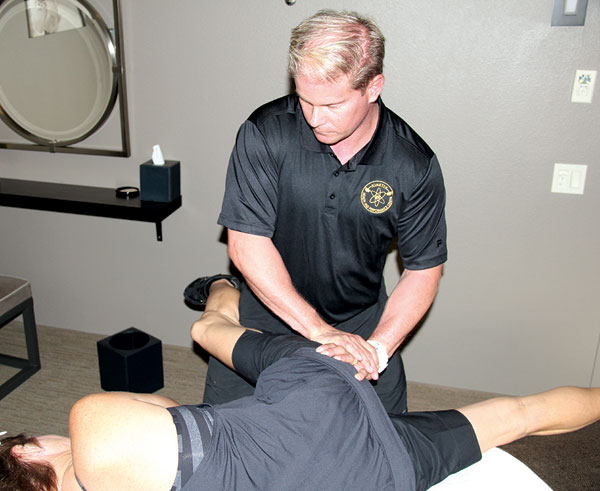A client recently described fibromyalgia as “widespread pain throughout my body which feels like my nerves are on fire.” She further stated, “Myofascial release seems to send a message to my nervous system that says, ‘You are safe.’”
Fibromyalgia is a chronic, debilitating condition that affects approximately four million adults per year. It is more prevalent in women but may affect anyone with a family history of the disease, a mood disorder such as anxiety or depression, PTSD, or any other chronic inflammatory disease, such as rheumatoid arthritis and lupus. The most common symptoms include diffuse musculoskeletal pain and tenderness, hypersensitivity to touch, fatigue, sleep disturbances including insomnia and restless leg syndrome, digestive issues such as irritable bowel syndrome, mood swings, brain fog, and impaired memory.
Over time, fibromyalgia may significantly interfere with a person’s ability to perform self-care tasks, manage a household, go to work or participate in leisure activities. The pervasive nature of the disease tends to strain interpersonal relationships as the fibromyalgia sufferer withdraws and isolates as a means of coping.
Fibromyalgia is usually triggered by physical or emotional trauma, surgery, or chronic inflammation. All these events can cause the body’s fascial system, the strong connective web of tissue throughout the body, to powerfully tighten around pain-sensitive structures such as bones, muscles, nerves, blood and lymphatic vessels and internal organs. Fascia forms the largest system in the body arranged as a three dimensional web suspended in a fluid substrate called “the ground substance.” Trauma solidifies the ground substance which has the capacity to deliver crushing pressure of up to 2,000 pounds per square inch on pain-sensitive structures.
The above referenced client also reported that she constantly feels as though she is “on alert.” Fibromyalgia may particularly affect the autonomic nervous system (the sympathetic and parasympathetic) which is responsible for modulating basic survival functions such as heart rate, body temperature, respiratory rate and digestion. When the fascia tightens around the fibers of the sympathetic nervous system, it triggers an emergency response and the person enters a chronic state of “fight or flight.” This is not intended to be a long-term response and this state of hyperarousal places profound stress on all systems in the body.
Clients with fibromyalgia often report an inability to tolerate massage, manual therapy, and other forms of body work because it may increase their pain and exacerbate their symptoms. John Barnes Myofascial Release is a gentle, manual therapy approach in which sustained pressure is delivered to tissues that appear “hot, hard, or tender.” The fascial system is never forced, but is allowed to release slowly over a period of at least five to eight minutes or longer as needed. As a result, the crushing pressures are removed from pain-sensitive structures. Pain is decreased or eliminated, normal circulation is reestablished and mobility is restored.
Because the fascial system is continuous from head to toe three-dimensionally, it is possible to treat an area remote from the site of most intense pain and still result in fascial releases in the painful area. If the client is experiencing an episode of intense pain and hypersensitivity, it is also possible to perform off-the-body energy work to promote healing until hands-on therapy can be tolerated.
The gentle, non-traumatic nature of myofascial release may bring hope to clients who have tried multiple forms of therapeutic interventions and medications to manage fibromyalgia symptoms.
Gina Malloy is a physical therapist and owner of MFRx Myofascial Release in Rancho Mirage. She can be reached at (760) 895.5145 or [email protected].












































Comments (0)